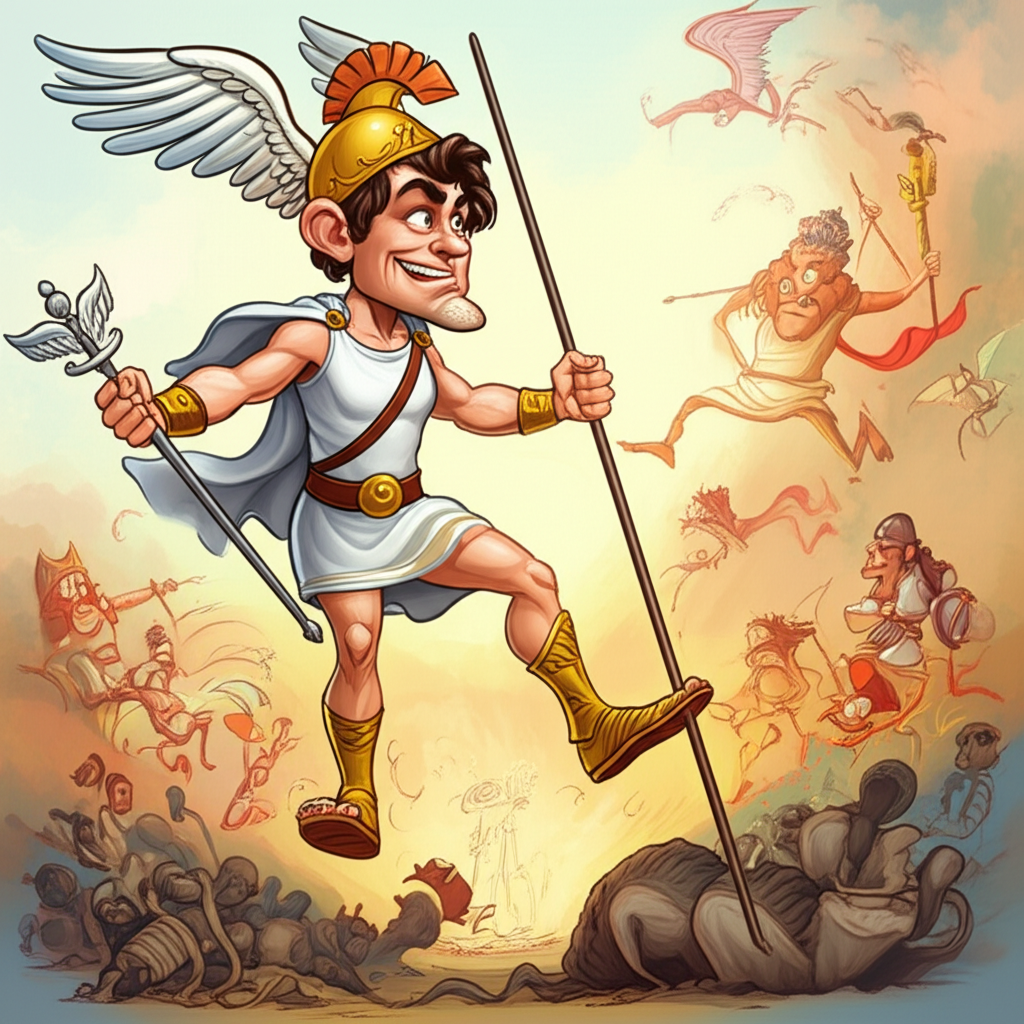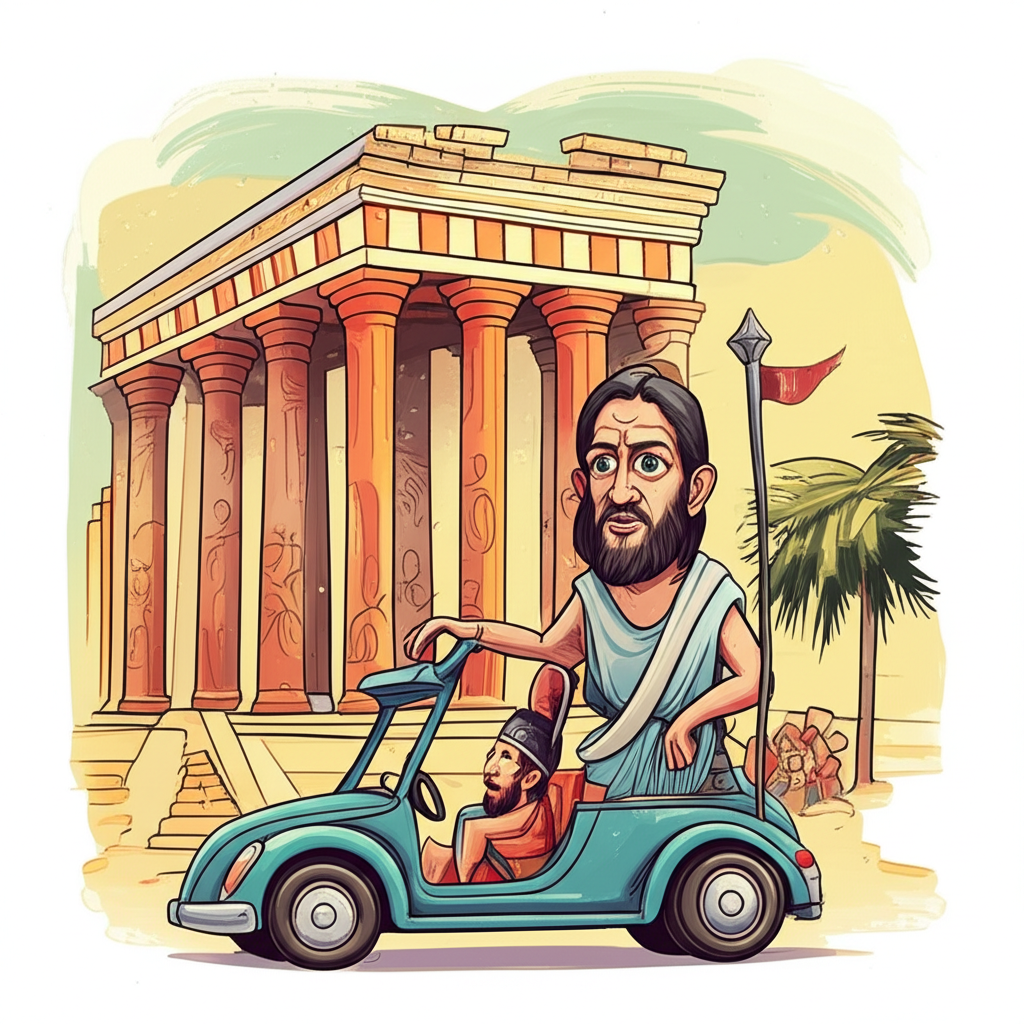
Introduction:
The story of Hermes and his involvement in the Titanomachy, the war between the Olympian gods and the Titans, is a cornerstone of Greek mythology. This is a traditional story, a narrative passed down through generations by the ancient Greeks, a people who, like many cultures throughout history, sought to understand the world and their place within it through storytelling. It is crucial to remember that this is a tale of legend, a product of human imagination and cultural expression, not a claim of truth or divine power.
Origins and Cultural Background:
The myth of Hermes and the Titanomachy originates in ancient Greece, a civilization that flourished in the Mediterranean region from roughly the 8th century BCE to the 6th century CE. This was a time of vibrant city-states, intellectual curiosity, and artistic innovation. The Greeks, living in a landscape of dramatic mountains, sun-drenched islands, and fertile valleys, developed a complex polytheistic religion, meaning they believed in many gods and goddesses. Their gods were not abstract concepts, but rather beings with human-like qualities: they experienced love, hate, jealousy, and ambition. They were believed to intervene in human affairs, influencing everything from the weather to the outcome of battles.
The Greeks, lacking modern scientific understanding, used these myths to explain the natural world. Thunder was the voice of Zeus, earthquakes the work of Poseidon, and the seasons were dictated by the actions of Persephone and her mother, Demeter. Their world was populated by heroes, monsters, and divine beings, all intertwined in a complex tapestry of relationships and conflicts. The Titanomachy itself, the struggle between the older generation of Titans and the younger Olympian gods, represents a fundamental shift in cosmic order, the overthrow of an older, perhaps chaotic, power structure by a new, more organized one.
Character / Creature Description: Hermes
Hermes, the swift-footed messenger of the gods, is a prominent figure in the Greek pantheon. He is often depicted as a young, athletic man with winged sandals, a wide-brimmed hat (petasos), and a staff entwined with serpents (caduceus). These symbols emphasize his key attributes: speed, communication, and negotiation. Hermes is the patron god of travelers, merchants, thieves, and orators. He is known for his cunning, his wit, and his ability to move effortlessly between the realms of the gods and mortals. He is not a god of raw power like Zeus or Poseidon; rather, his strength lies in his intelligence, his adaptability, and his capacity to navigate complex situations. It is important to remember that these are symbolic representations; the winged sandals represent the ability to travel and deliver messages quickly, the staff symbolizes authority and negotiation, and the role of messenger symbolizes the spread of ideas.
Main Story / Narrative Retelling:
The Titanomachy, the Great War, was a conflict that shook the foundations of the cosmos. On one side stood the Titans, the elder gods, children of Gaia (Earth) and Uranus (Sky). They ruled the world with their immense power and ancient wisdom. Leading the Titans was Cronus, the youngest and most ambitious, who had overthrown his own father, Uranus, to seize power.
On the other side were the Olympians, the younger generation of gods, led by Zeus, the son of Cronus. Zeus, along with his siblings – Poseidon, Hades, Hera, Demeter, and Hestia – had been swallowed by Cronus at birth, fearing a prophecy of his own overthrow. However, thanks to the cunning of his mother, Rhea, Zeus escaped this fate and, upon reaching adulthood, challenged his father.
The war lasted for ten long years. It was a brutal struggle, a clash of titans in every sense of the word. The Titans, with their raw power and experience, unleashed devastating attacks, shaking the earth and creating chaos in the heavens. The Olympians, younger but determined, fought valiantly, but the tide of war seemed to favor the Titans.
Hermes, though not a warrior in the same vein as Ares or Heracles, played a vital role in the conflict. His speed and agility proved invaluable. He acted as a messenger, relaying orders from Zeus to his allies, carrying warnings, and ensuring communication across the battlefield. He could flit between the mortal realm and the divine realm, gathering information and ensuring the Olympians were never truly isolated.
Hermes’s quick wit and diplomatic skills were also crucial. He was often sent to persuade, to negotiate, and to resolve conflicts that threatened to divide the Olympians. He used his charm and cleverness to rally support, to offer counsel, and to prevent internal squabbles that could weaken their cause.
Some accounts even suggest that Hermes played a role in freeing the Cyclopes and the Hecatoncheires, creatures of immense power imprisoned by Cronus. Their release and subsequent support for the Olympians were pivotal in tipping the balance of the war. Armed with the Cyclopes’ thunderbolts, Zeus was finally able to defeat Cronus and the Titans.
The final battle was a cataclysmic event. Zeus, wielding the thunderbolts, unleashed a storm of lightning, while Poseidon used his trident to unleash devastating waves. The earth trembled, and the heavens roared. The Olympians, bolstered by the Cyclopes and Hecatoncheires, overwhelmed the Titans. Cronus and his allies were defeated and cast down into Tartarus, the deepest abyss of the underworld. Hermes, ever present and agile, witnessed the victory, a testament to the power of unity, intelligence, and the unwavering resolve of the Olympians.
Symbolism and Meaning:
The story of the Titanomachy, and Hermes’s role within it, offers rich symbolism. The war itself can be seen as a metaphor for the struggle between generations, between the old order and the new. The Titans, representing the past, are overthrown by the Olympians, representing the future.
Hermes’s character embodies several important values. His speed represents the importance of communication and the rapid spread of information. His role as a messenger highlights the need for diplomacy and negotiation in resolving conflict. His cleverness and adaptability demonstrate the value of intelligence and wit in overcoming adversity. He represents a kind of intellectual and diplomatic power, a different form of strength than physical prowess.
The story could also be interpreted as a reflection of the Greek understanding of the cosmos, the belief in an orderly universe ruled by powerful, but ultimately imperfect, gods. It showcases a shift from chaos to order. The rise of the Olympians and the establishment of Zeus as the supreme ruler represent a triumph of order over the primordial chaos represented by the Titans.
Modern Perspective:
The myth of Hermes and the Titanomachy continues to resonate in modern culture. Hermes’s image and attributes have influenced art, literature, and popular culture. He is a frequent character in fantasy novels, video games, and comic books, often depicted as a cunning and resourceful hero.
The themes of the Titanomachy, such as the struggle for power, the clash of generations, and the triumph of order over chaos, are timeless and continue to inspire writers, filmmakers, and artists. The story serves as a reminder of the cyclical nature of history, the constant struggle for dominance, and the importance of resilience and adaptability.
Conclusion:
The story of Hermes and the Titanomachy is a captivating tale from the rich tapestry of Greek mythology. It is a product of human imagination and a reflection of the ancient Greeks’ worldview. It is a story to be enjoyed and appreciated for its cultural significance, its enduring themes, and its contribution to the legacy of storytelling.
As Muslims, we acknowledge that Allah (God) is the sole Creator and Sustainer of the universe. We recognize that only Allah possesses true power and knowledge. This story is a product of human creativity and imagination, meant to be appreciated for its cultural value and as an example of the human need to understand and explain the world. It serves as a reminder of the power of storytelling and the enduring appeal of myth and legend. It is a celebration of human ingenuity and cultural heritage.





